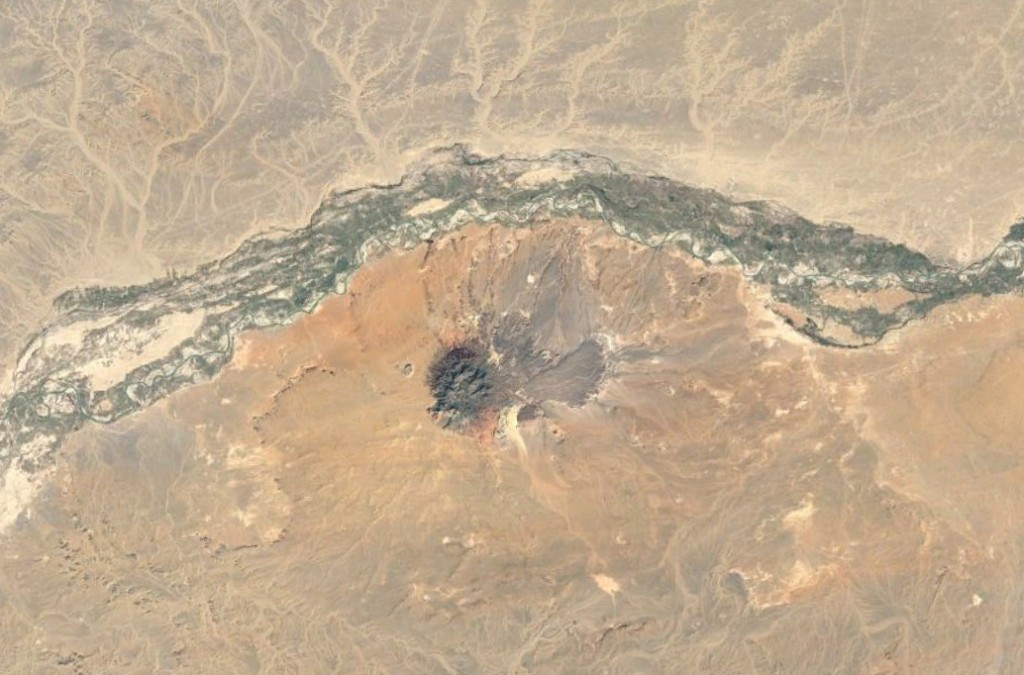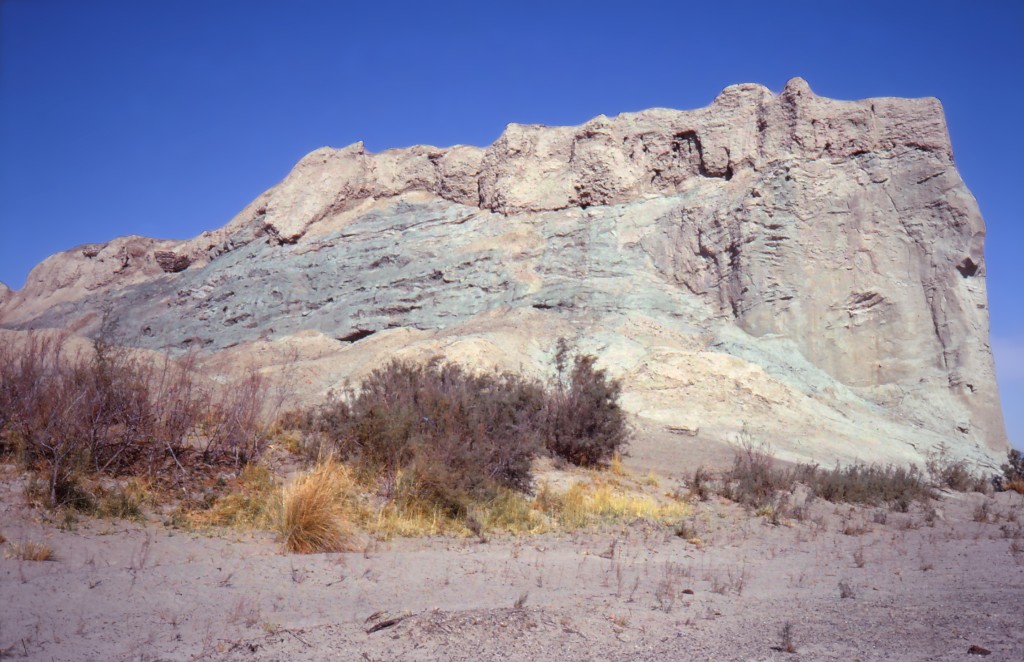Mountains
Sistan is largely devoid of mountains, although it is bounded by them on the west in Iran and the south in Baluchistan. The volcanic mountains, created by the clash of the Afghan block with the Eurasian continent, serve as key landscape features as well as evidence of the tectonic origins of the Helmand Basin. At the southwest tip of Sistan is Koh-i Malik Siah, which serves as the border between Afghanistan, Iran, and Pakistan. It has significant deposits of copper and lead. Numerous ancient copper smelting sites, such as Jali Robat, are found along the south edge of Sistan near this mountain. A large source of travertine, which has been mined in ancient and modern times, is found on the north side of the Chagai Hills. Koh-i Khan Neshin, a singular volcano, is located at the point at which the Helmand River stops flowing to the south and turns west. We surveyed this mountain but found no significant archaeological sites.
A small pillow of green volcanic rock, fallen from the slopes of Koh-i Khan Neshin, lies across the Helmand River and is the base of the site Šna Qala that we surveyed. Farther west in the Hamun-i Sabari in Iran is a large black volcanic plug, Koh-i Khwaja, on which sits a famous fire temple. The black stone of this formation is one of the key sources of stone vessels and tools found in our survey.




